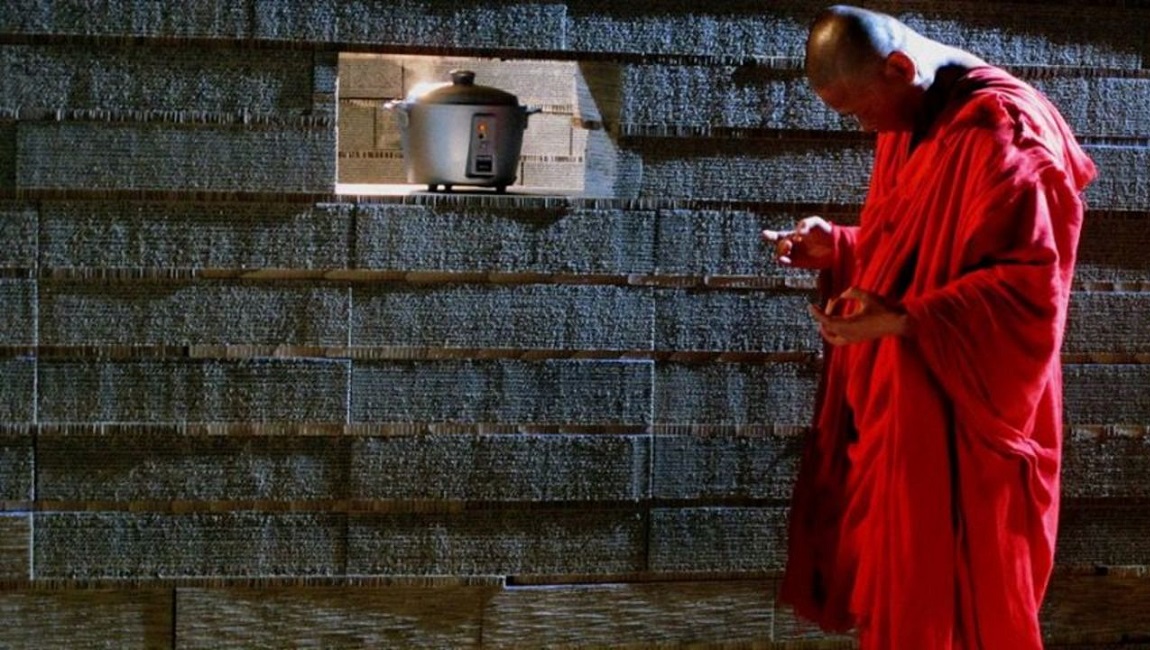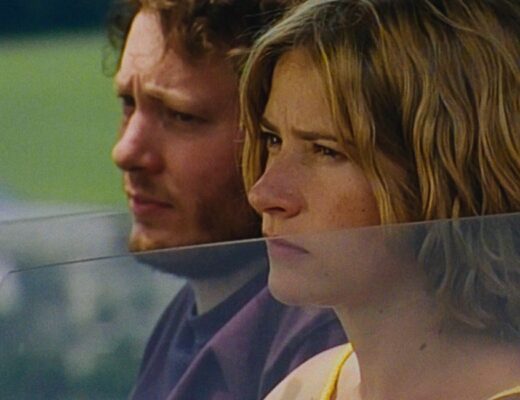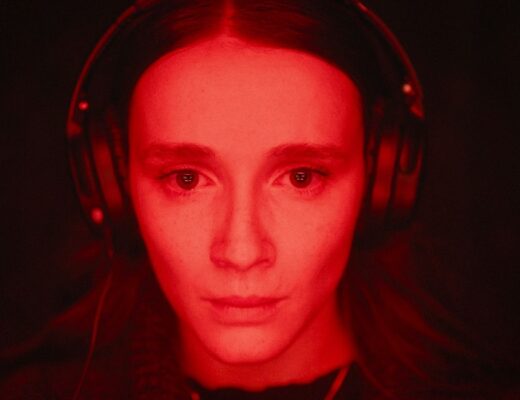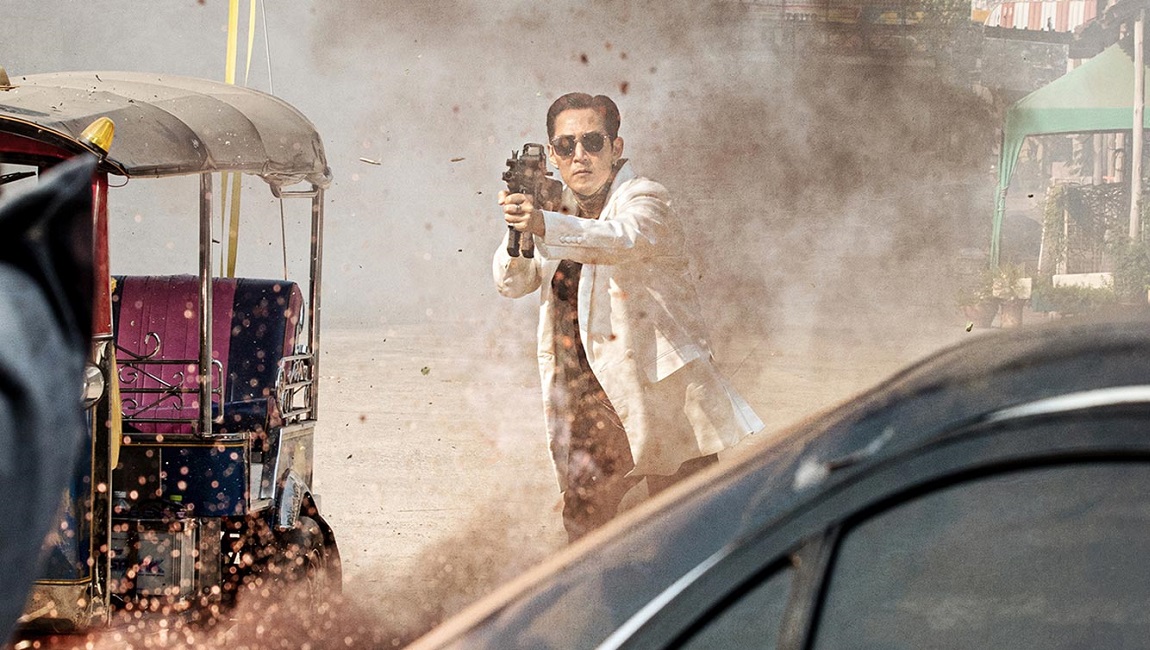In 2013, around the time that Stray Dogs had its world premiere at the Venice Film Festival, Tsai Ming-liang announced his retirement from filmmaking. In the seven years since, he’s shown himself to be a rather active retiree, signing his name to no fewer than 10 moving image works—half of which near or clear feature-length status—and proving that a restless, desirous artistic mind never fully stops, even if it feels compelled to slow down. And slowing down is exactly what Tsai began doing just a couple of years before his announcement, in 2011, when he produced his first significant theatrical work in roughly a decade. Only You, a three-part performance art piece that ran inside a small blackbox in Taipei, featured, among other things, an extended sequence in which Tsai regular Lee Kang-sheng dragged himself from one end of the stage to the other in interminably slothful fashion, as if the stage were suddenly suspended in a brick of molasses. Upon finally making it to the other side, Lee served the audience hors d’oeuvres.
Tsai seems to have understood that, by asking Lee to perform slow motion in real-time, he had broken new ground in his long-running excavation of the actor’s corporeal resources, which, after two decades of ceaseless collaboration, were perhaps threatening to run dry. And so, in 2012, the director promptly repeated the exercise, this time in front of a camera. Walker, as the title announces, is comprised exclusively of shots of Lee—bald and clad in a red monk’s robe—shuffling amidst crowds, across bridges, and through Tsai’s compositions, which are, as ever, indelibly his own, though noticeably more puckish than those found in his narrative work. And thus Walker does double duty, investigating the possibilities of Tsai’s static camera alongside those of Lee’s moving body; it probes the musculature of the director’s acteur fétiche, but also his interest in trick shots and forced perspective—which is to say, his sense of humor. That Tsai excels as a comedian is no surprise to those of us who got on his wavelength long ago, though nowhere in his preceding work does he commit so consistently and so totally to a comic mode. In the very least, he’d never before landed a punchline as sharp as the one that concludes Walker. Like the theatrical performance that inspired it, this long, slow, ostensibly contemplative short ends with a well-deserved snack.
If it wasn’t already clear, the Walker films understand, intimately, that human locomotion is a mere byproduct of the metabolic process. Even religious practice requires caloric intake.
No Form and Diamond Sutra more directly invoke Buddhist religious practice (only implied in Walker) courtesy of Lee’s robe, which he will don in each of the subsequent shorts, a crimson tag to mark him out as he perambulates through dense urban environs. Though it’s not especially hard to spot Lee in No Form, given the film’s construction: Lee is shuttled back and forth between two worlds, one earthly and mundane, represented by busy subway platforms and familiar sidewalks, and the other ethereal and alien, a stark white void rendered as a series of plasticine rooms, which alternately suggest that Lee has reached a higher plane of existence and that he’s trapped inside a rather high-end refrigerator. The final shot—in which the camera peers back into the void through a window while Lee slowly approaches from afar, eventually attempting to shove his face through the portal—suggests, not without irony, that our itinerant monk is quite eager to abandon the airy spiritual realm into which he’s been cast so that he might return, headfirst, to the cramped constrictions of our own.
Diamond Sutra opts for a much simpler set up: one shot, one wall, and another lately revealed portal, which now holds a bubbling rice cooker in place of Lee’s tortured visage. Tsai sets his timer to the internal clockwork of the rice cooker, shooting until it clicks off, even after Lee has completed his lateral journey from right to left, and wandered beyond the frame itself. Again, the primary anatomical structure—apart from Lee’s body—is that of the joke: an aural set-up (we hear strange gurgling sounds before we can identify them), a late-blooming visual reveal, and a knowing callback. If it wasn’t already clear, the Walker films understand, intimately, that human locomotion is a mere byproduct of the metabolic process. Even religious practice requires caloric intake.
Tsai seems to have understood that, by asking Lee to perform slow motion in real-time, he had broken new ground in his long-running excavation of the actor’s corporeal resources, which, after two decades of ceaseless collaboration, were perhaps threatening to run dry.
Or, to put it another way, there’s no such thing as no form. Spiritual concepts are meaningless without physical shapes in which to house them: a person must have a body; a movie demands a theater; a home is nothing if it lacks inhabitants. And so, when Tsai felt a nostalgic urge to revisit the apartment complex in which he grew up—now a crumbling, empty, and (needless to say) leaky ruin somewhere in Kuala Lumpur—he asked Lee to come home with him. Like the other Walker shorts, Walking on Water gives Tsai free rein to satisfy his taste for baroque camera placement, allowing him to take advantage of the trompe l’oeil possibilities inherent in reflective surfaces, for example. But unlike the films that precede it, the compositional tricks serve melancholic, rather than comedic, ends. Even granting that this Lee Kang-sheng is different from the Lee Kang-sheng who grows into early adulthood—and thence into middle age—across Tsai’s features, there’s a creeping sense that this monkish Lee now seeks—as the other, more secular Lee does in Tsai’s narrative work—an urgent communion of bodies, and that Tsai’s camera fails to find one for him. The abandoned building that housed Tsai’s youth may no longer be empty, but with only a single inhabitant, it’s still quite lonely.
No No Sleep, the latest Walker short, does offer Lee the promise of a partner, a young Japanese man whom he encounters inside a Tokyo onsen while catching some much needed R&R. Submerged side by side in a soaking pool, the two men’s arms bob up and down, nearly grazing as they sit in mutual silence. But before their hands touch, the young man stands up and moves on. It’s not that he has anywhere in particular to go, or anyone to see. Indeed, he will spend a restless night alone in a capsule hotel, as will Lee. He simply could not linger in repose any further. The body, and its attendant desires, are incapable of prolonged retirement. Which is, of course, precisely what the Walker films demonstrate: a man slows down; he never truly stops.







